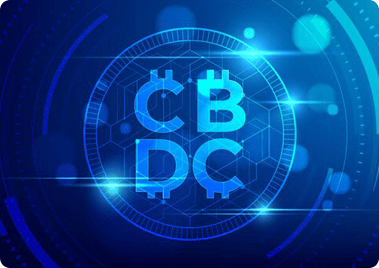Money has evolved from a commodity to a metallic currency to a paper currency to a digital currency. Its changing characteristics are shaping the new financial landscape of the economy, and the digitization of money is the next milestone in monetary history. The Reserve Bank of India, often known as the Central Bank, plays an essential role in the Indian financial system and is a pillar of the financial ecosystem. Essentially, it has always given the economy rapid, frictionless, efficient, and dependable answers. Payment systems and currency issuance are examples of fast and smooth solutions. Recent technological advancements have enabled India to make tremendous progress toward digital payment innovation. India has made significant progress toward digital payment innovation, as seen by the passage of a distinct Payment and Settlement Systems Act, which has facilitated the country’s payment eco-orderly system’s growth. It is a source of tremendous pride for India to have payment choices that are safe, secure, efficient, accessible, inexpensive, easy, and available 24x7x365 days a year. With the arrival of cutting-edge technology the creation of a new form of money, namely Central Bank Digital Currencies (CBDCs) has taken place.
What are CBDCs?
A CBDC is a digital form of legal tender issued by a central bank. It is the same as fiat currency and may be exchanged for it one-for-one. Just the form is different. CBDC is a virtual or digital currency, but it is not comparable to the private virtual currencies or cryptocurrencies that have surged in popularity over the last ten years. It is also critical to comprehend the distinction between CBDC and cryptocurrencies. Cryptocurrencies are not all digital currencies, but all digital currencies are cryptocurrencies. While digital money is not encrypted, cryptocurrency functions in an encrypted way using blockchain technology. Private virtual currencies do not reflect any person’s debt or obligations since there is no issuer.
How Would CBDC Differ from Cryptocurrency?
The central bank will issue CBDCs using algorithm-driven procedures rather than competitive incentive mechanisms. Unlike private crypto mining, the key concepts of these algorithms will be energy efficiency and environmental friendliness. As a result, the issuance and maintenance of CBDCs are predicted to use far less energy than the more energy-intensive procedures often involved with the mining and distribution of private cryptocurrencies.
Unlike private cryptos, where anybody may compete to mine and generate the cryptocurrency, only the central bank can issue CBDC and simply convert current bank holdings to CBDC balances. As a result, CBDCs will benefit the general public while protecting consumers by avoiding the social and economic implications of private virtual currencies.
Characteristics of the Digital Rupee
The following are the characteristics of the Central Bank’s digital currency:
1) CBDC is a sovereign currency that central banks issue in accordance with their monetary policies.
2) It shows on the central bank’s balance sheet as a liability.
3) All individuals, businesses, and government organizations must accept it as a means of payment, legal currency, and a secure store of value.
4) CBDC may be readily converted into commercial bank money and cash.
5) CBDC is fungible legal money that does not need holders to have a bank account.
6) CBDC is projected to reduce the cost of money issuance and transactions.
The Advantages of the Digital Rupee
As more of our everyday activities are done online and the global economy grows increasingly digital, digital assets have risen in importance.
Convenience and Accessibility
A digital rupee would make financial services more accessible to both consumers and businesses by allowing rapid, secure transactions 24 hours a day, seven days a week. Moreover, it may reduce the need for physical cash, increasing financial inclusion for individuals who may not have access to traditional banking services.
Transparency and Security
The adoption of a digital rupee might allow for the secure recording of transactions on a transparent and unbreakable digital ledger. This might improve financial system accountability and reduce the risk of fraud.
Cost-effectiveness
Since there are no intermediaries and the costs of manufacturing and transmitting actual currency are lower, digital transactions are often less costly than conventional bank transactions. This might reduce the costs of carrying out financial transactions for both individuals and enterprises.
How Do CBDCs Differ From Current Electronic Payments?
Most of us in big cities make our payments online. UPI, wallet-to-wallet, NEFT, IMPS, and RTGS are among the many electronic payments available. In this case, the question is how CBDCs vary from the digital money that we are currently used to utilizing.
Banking solutions have been at the heart of all current digital payment methods. To transfer money from one account to another, you must have a bank account. Even for wallets, cards, and UPI payments, an account is required. These account transfers are the responsibility of the associated commercial banks.
Similarly, when banks pay each other, they deposit reserves with the RBI. Consumers, on the other hand, can’t conduct direct transactions where the responsibility is with the Central Bank unless it’s actual currency.
The CBDC’s obligation will be that of the Central Banks (or the RBI in India’s case). To make digital payments, one may not require a bank account, as in the case of current digital transactions.
Forms of CBDC Being Considered
The CBDC concept paper states that digital money may be token-based or account-based. The token-based system will function similarly to banknotes in that anybody owning tokens at any one time would presumably owe the digital currency. Under this approach, the individual token owner must validate the legality of his token ownership. CBDC-R will be the name given to such a digital currency. Account-based, on the other hand, will be akin to having a bank account in that the RBI is anticipated to keep track of all CBDC holders’ transactions and balances. The central bank would also have to keep track of who owns whose monetary balances. In the instance of an account holder, an intermediary will be responsible for validating the account holder’s identification. CBDC-W will be the name of this digital currency.
Final Word
As technology advances, it is leading to the digitization of services as well as new methods of working across sectors. We are now on the verge of entering a new era in banking, with currency digitization being the first step in this transition as additional novel payment mechanisms are created. The digital rupee is a Central Bank Digital Currency that will be issued by the RBI and will be backed by the central bank’s reserves. CBDC usage will expand, improve, and become easier to use with the help of government-provided infrastructure. This improvement, similar to how UPI made digital cash more user-friendly, will enhance people’s access to digital currencies.






